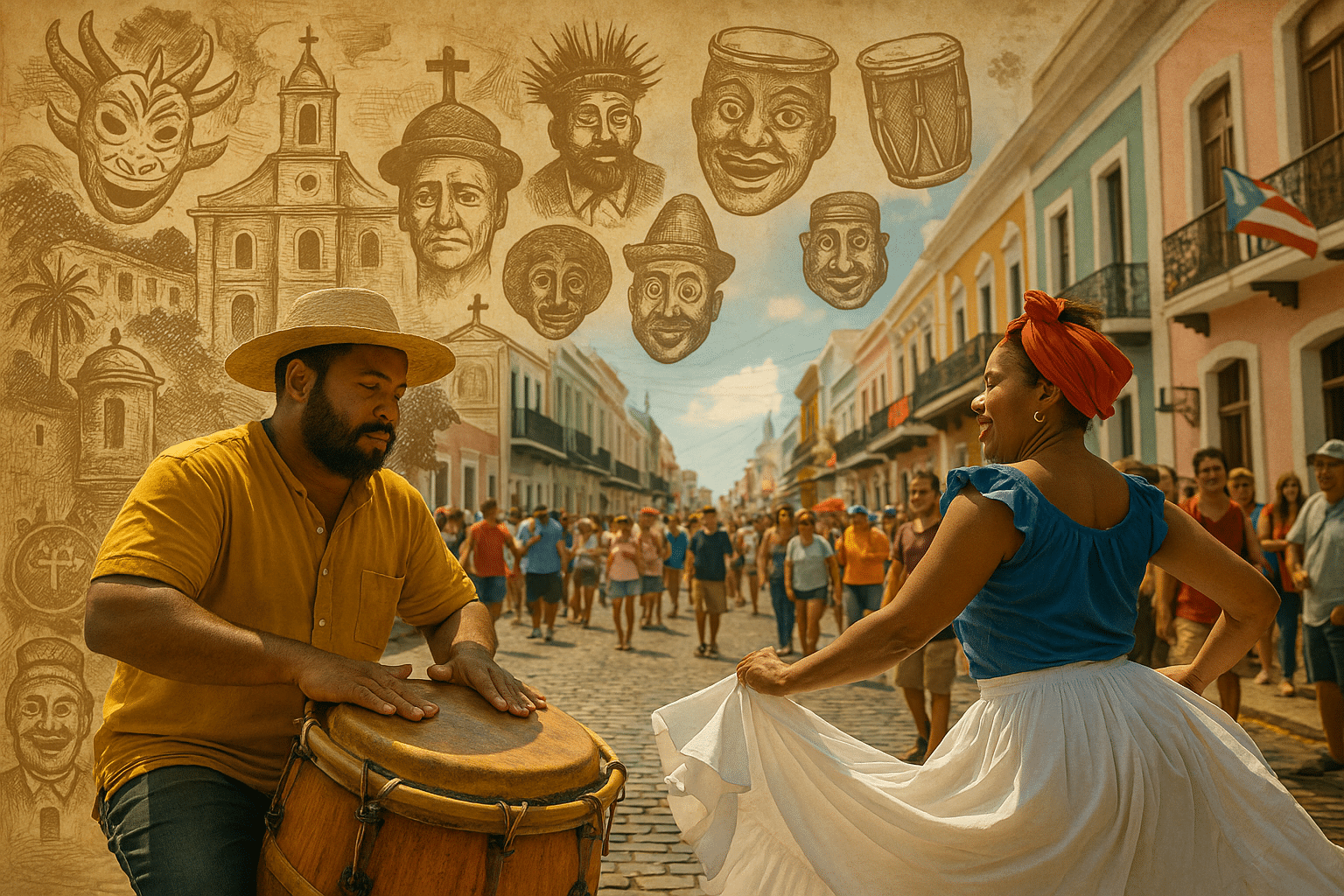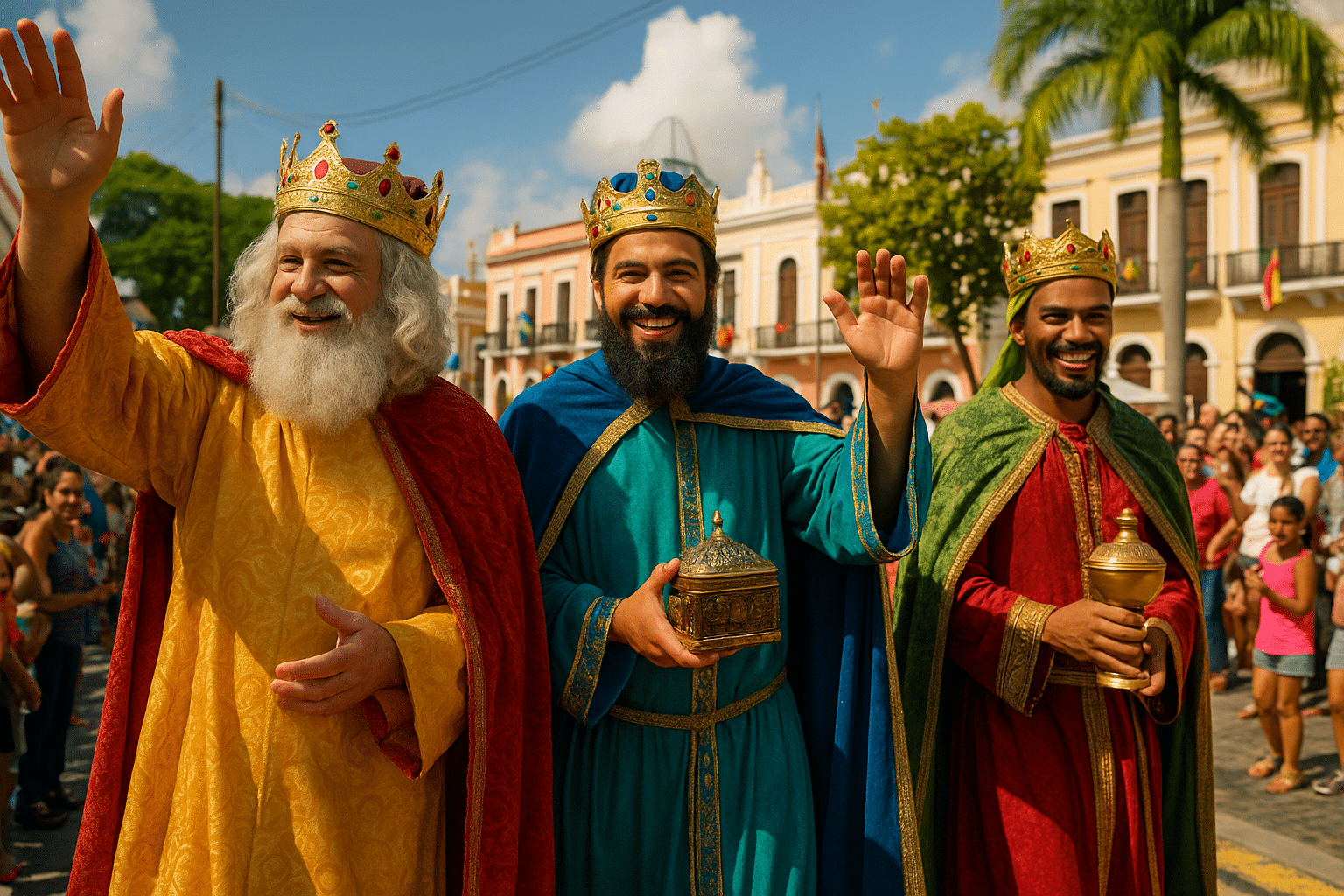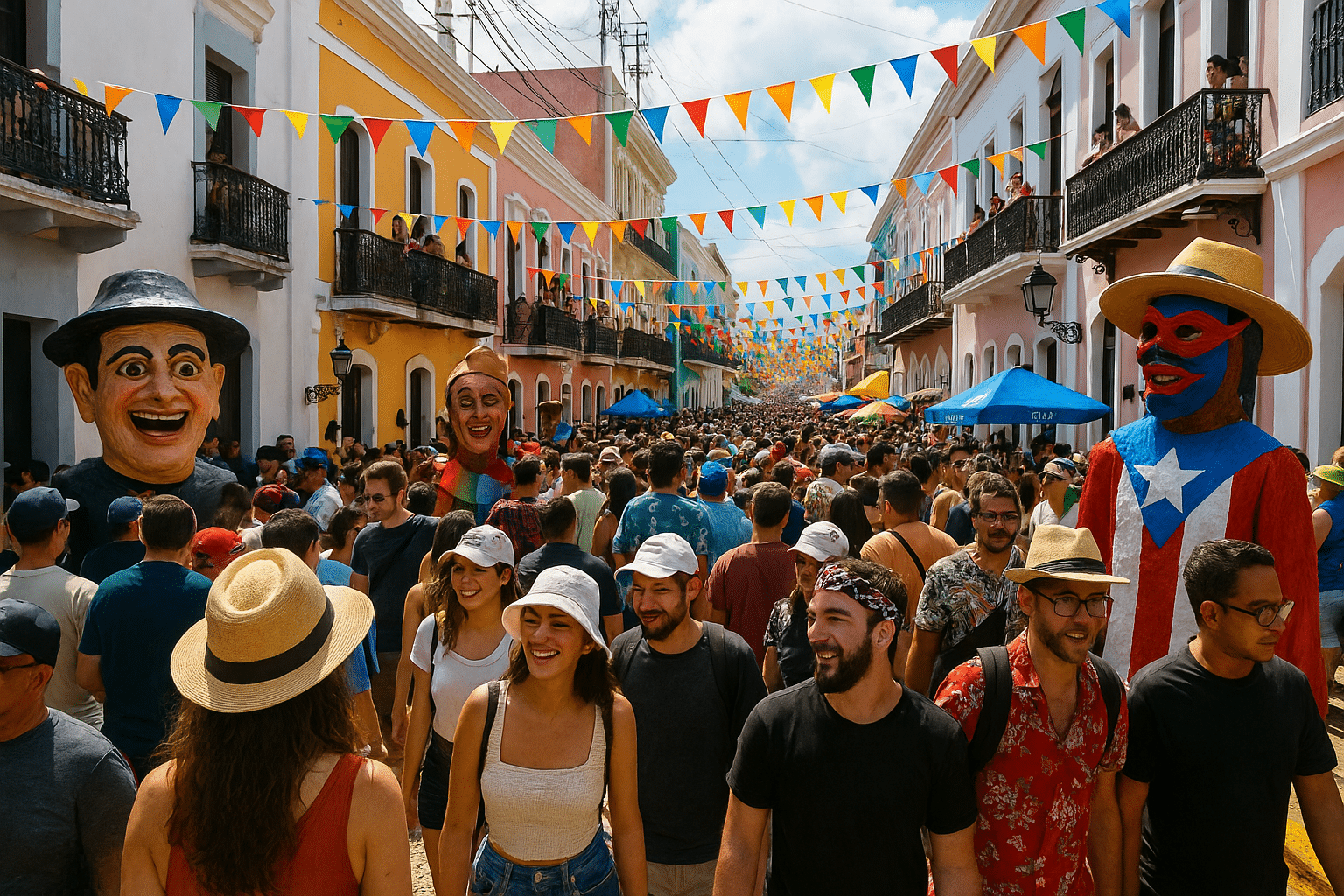If you’ve ever walked through the cobblestone streets of Old San Juan during January, you know the feeling — the rhythm of drums, the hum of Bomba and Plena echoing between colorful colonial walls, and the scent of lechón filling the air. It’s not just a party. It’s history brought to life.
That’s what SanSe Puerto Rico represents — a vibrant bridge between the past and the present, where faith, art, and community pulse in harmony. Known formally as Fiestas de la Calle San Sebastián, this beloved celebration transforms Old San Juan into a living museum of Puerto Rican heritage.
In this guide, we’ll explore how SanSe has become a tribute to Puerto Rico’s cultural roots — from its humble beginnings to its status today as the island’s most anticipated and unifying event. You’ll discover its history, music, art, and spirit — and why it remains the heartbeat of Puerto Rican identity.

The Historical Roots: From Religious Celebration to Cultural Icon
The story of San Sebastián Festival Puerto Rico 2025 begins in the early 1950s when Father Madrazo, a priest of San José Church, revived an old Spanish tradition to honor Saint Sebastian, the protector of soldiers and athletes. What started as a small religious procession grew into a vibrant community celebration.
By the late 20th century, SanSe had evolved from a church-centered observance into a massive cultural event — one that perfectly reflected Puerto Rico’s resilience and creativity. Each generation added its own touch: musicians, artists, and dancers turned the streets into open-air stages.
Today, SanSe isn’t just a festival; it’s a statement of identity. It honors faith, but it also celebrates the artistry, endurance, and joy that define Puerto Rican culture.
Stat Insight: According to Discover Puerto Rico (2023), the festival attracts over 200,000 attendees each year, making it the largest cultural event in the Caribbean. This sheer scale underscores how the festival has grown into a powerful cultural force — a true reflection of SanSe Puerto Rico.
Old San Juan: The Cultural Heartbeat of the Festival
Every January, Old San Juan becomes a symphony of color, sound, and movement. The centuries-old streets that once witnessed colonial battles now host a different kind of parade — one that celebrates Puerto Rican life in all its forms.
The Calle San Sebastián — narrow, historic, and iconic — is the core of it all. But the celebration extends far beyond a single street. Plaza del Quinto Centenario, Plaza de Armas, and Paseo de la Princesa transform into cultural hubs, each showcasing artisans, performers, and musicians.
The architecture itself contributes to the magic. Spanish balconies draped in flags, cobblestone alleys lit by lanterns — every corner tells a story. It’s here that tradition and modernity collide, where colonial walls echo the island’s African drums, Taíno influences, and Spanish melodies.
San Juan doesn’t just host the festival — it breathes it. During SanSe, the city becomes Puerto Rico’s stage, its voice, and its soul.
Art and Identity: How SanSe Celebrates Puerto Rican Creativity
SanSe is a love letter to Puerto Rican creativity. Walk through its artisan markets and you’ll find more than souvenirs — you’ll find stories carved into wood, molded in clay, and painted with history.
Over 300 artisans from across the island come to showcase their craft. You’ll see intricate vejigante masks, jewelry made from local materials, and wood carvings that represent generations of tradition. Each piece captures a part of Puerto Rico’s cultural DNA — its resilience, humor, and passion.
But SanSe isn’t just about tradition — it’s also about innovation. Young artists blend the old with the new, reimagining folk art with modern techniques. This fusion of past and present is what keeps Puerto Rican artistry alive and evolving.
According to the Institute of Puerto Rican Culture (ICP, 2024), there are over 10,000 active artisans across the island — a number that continues to grow as SanSe gives these creators visibility and pride. The festival isn’t just a celebration; it’s an ecosystem that sustains Puerto Rican art.
The Music That Defines a Nation
No sound is more Puerto Rican than the blend of drums, maracas, and guitars that fills the air during SanSe. Music here is more than entertainment — it’s identity in motion.
You’ll hear Bomba, Puerto Rico’s oldest African-influenced genre, with dancers spinning to rhythms that speak of history and resistance. Then comes Plena, the “sung newspaper” of the people, carrying messages of love, humor, and social commentary. And of course, salsa, reggaetón, and Latin pop dominate the night stages, uniting generations in rhythm.
In every plaza, local bands and national artists perform. The music is spontaneous — one moment you’re watching a stage show, the next you’re caught in a street parranda surrounded by strangers who instantly feel like family.
This musical diversity captures Puerto Rico’s essence: a fusion of influences, a rhythm of resilience, and a melody of joy. When the drums beat, history dances — and the island dances with it.
The Cabezudos: Puerto Rican History on Parade
Among SanSe’s most beloved traditions are the Cabezudos — giant papier-mâché heads that parade through the streets. They represent historical and cultural figures, from political icons to local legends, blending satire and homage in one colorful spectacle.
Each Cabezudo is handmade by Puerto Rican artisans, continuing a craft passed down for generations. They’re whimsical, funny, and deeply meaningful — walking symbols of the island’s heritage and humor.
For many children, seeing the Cabezudos is the highlight of the festival. But for adults, they serve as reminders of Puerto Rico’s ability to laugh, reflect, and celebrate its identity, even in difficult times.
The Cabezudos are proof that in Puerto Rico, history doesn’t live in books — it dances in the streets.
Faith, Family, and Community: The Soul of SanSe
At its core, SanSe remains deeply spiritual. The festival still begins with a blessing at Iglesia San José, where locals and visitors gather to honor Saint Sebastian — the saint who inspired it all. Faith, here, is not solemn; it’s joyful, shared through music, laughter, and gratitude.
Families play a central role. Elders tell stories of past festivals, children wave Puerto Rican flags, and neighbors reunite in the spirit of community. SanSe is multigenerational — a tradition that connects grandparents to grandchildren through shared memories and cultural pride.
In a world that changes quickly, SanSe reminds Puerto Ricans of who they are — a people defined by unity, resilience, and faith.
SanSe and Puerto Rico’s Global Identity
Today, SanSe is more than a local event — it’s a cultural ambassador. The festival attracts visitors from around the world who come not just to party, but to understand Puerto Rico’s story.
Social media has amplified its reach, turning the celebration into an international showcase of Puerto Rican pride. Yet despite the global attention, the festival has managed to preserve its authenticity — staying true to its roots in community, creativity, and culture.
For travelers, SanSe offers something deeper than entertainment. It’s an invitation to feel the pulse of Puerto Rico, to dance in its streets, and to become part of a living legacy.
Preserving the Roots: Challenges and the Future of SanSe
Like all great traditions, SanSe faces challenges. Commercialization and overcrowding risk diluting its essence, while modern tourism can sometimes overshadow local voices.
Thankfully, organizations like the Institute of Puerto Rican Culture (ICP) and community leaders have stepped up to ensure that SanSe remains a festival for the people. Initiatives now promote sustainability, eco-friendly practices, and artisan-centered participation to keep the event authentic.
The younger generation also plays a key role. Many young Puerto Ricans are reclaiming their cultural identity through art, music, and activism — ensuring that SanSe evolves while staying true to its purpose.
This balance between progress and preservation is what keeps SanSe alive. It’s not about freezing tradition — it’s about letting it grow, adapt, and inspire.
Why SanSe Matters: A Celebration of Who We Are
When you walk through Old San Juan during the festival, you can feel it — the heartbeat of a nation proud of its roots. The San Sebastián Festival Puerto Rico isn’t just another event on the calendar; it’s a living story of identity, art, and joy.
SanSe connects past and present, faith and freedom, individuals and community. It reminds Puerto Ricans that their culture isn’t confined to museums — it’s alive in every drumbeat, every dance, and every smile.
And if you want to explore this spirit even deeper — from local artisan markets to authentic cultural tours — platforms like EnMiPatioPR help locals and visitors connect with Puerto Rico’s living traditions, including SanSe and beyond.
SanSe is proof that culture isn’t something we watch — it’s something we live.



